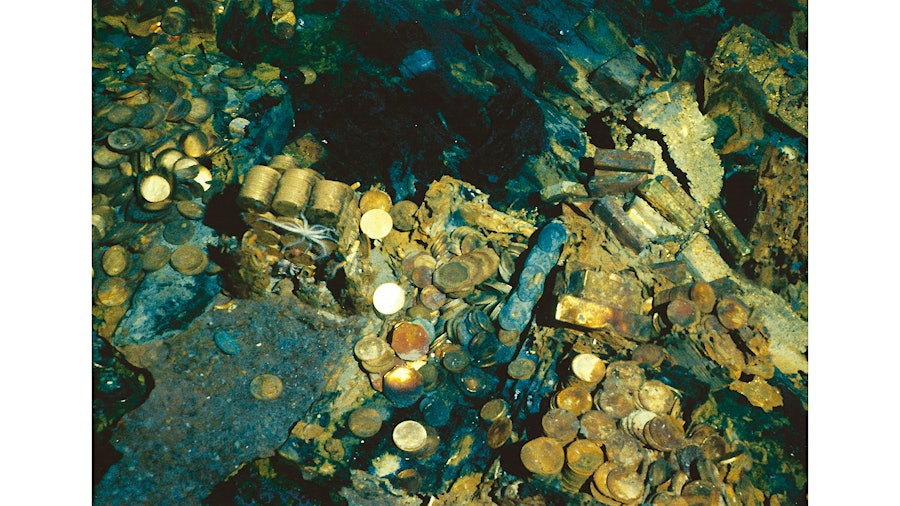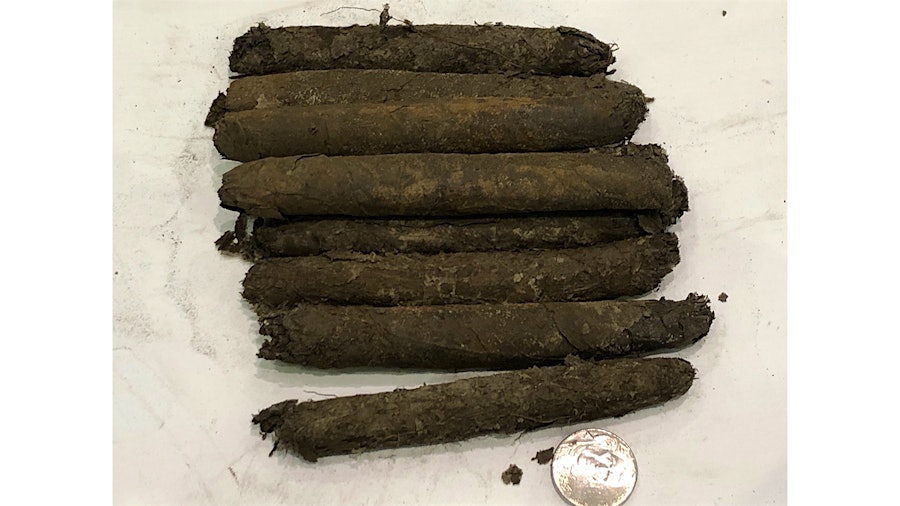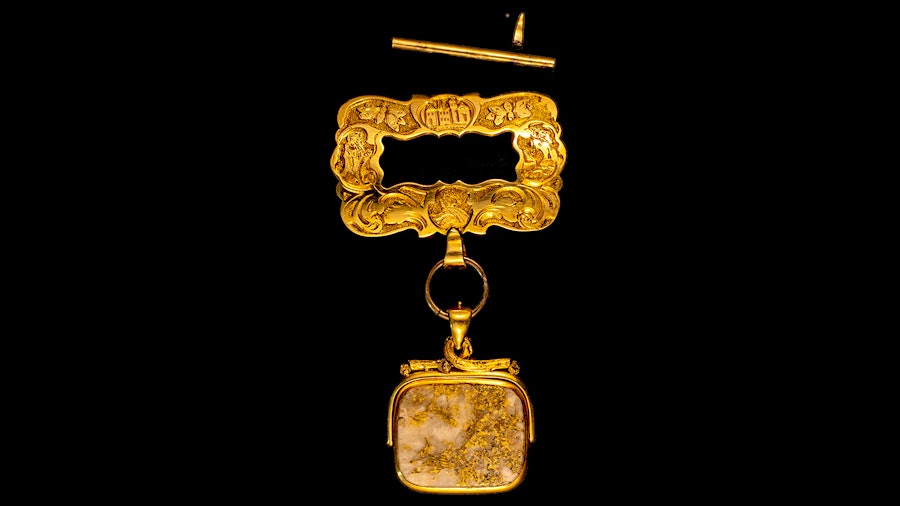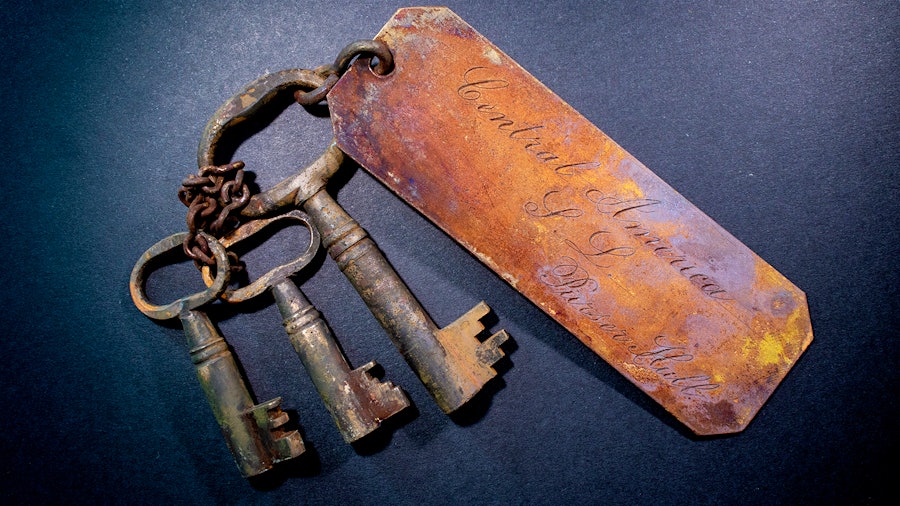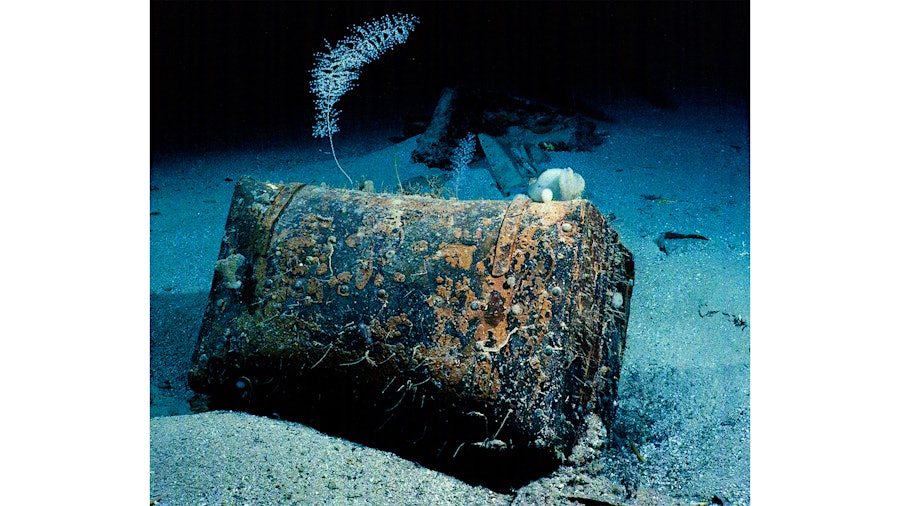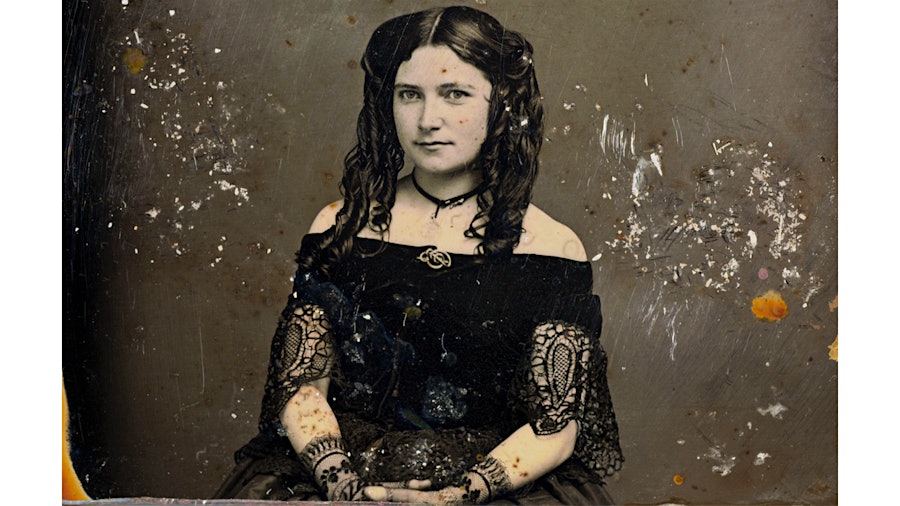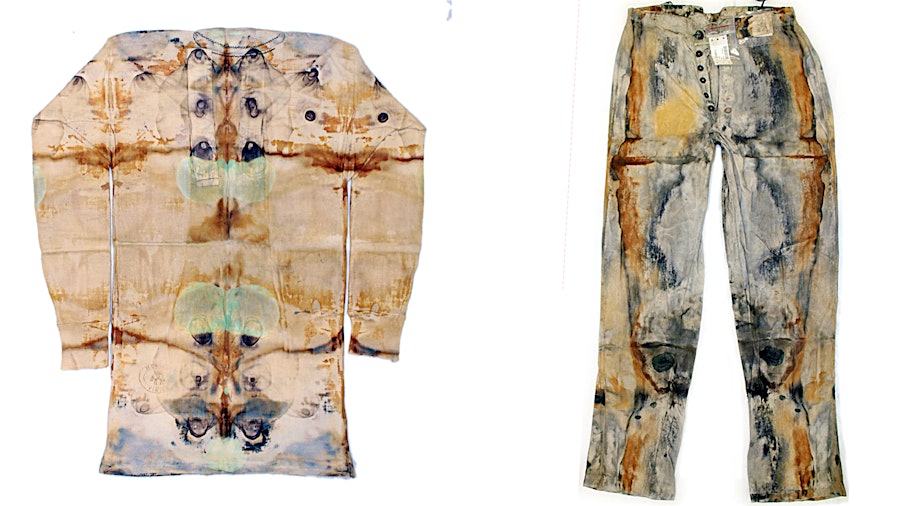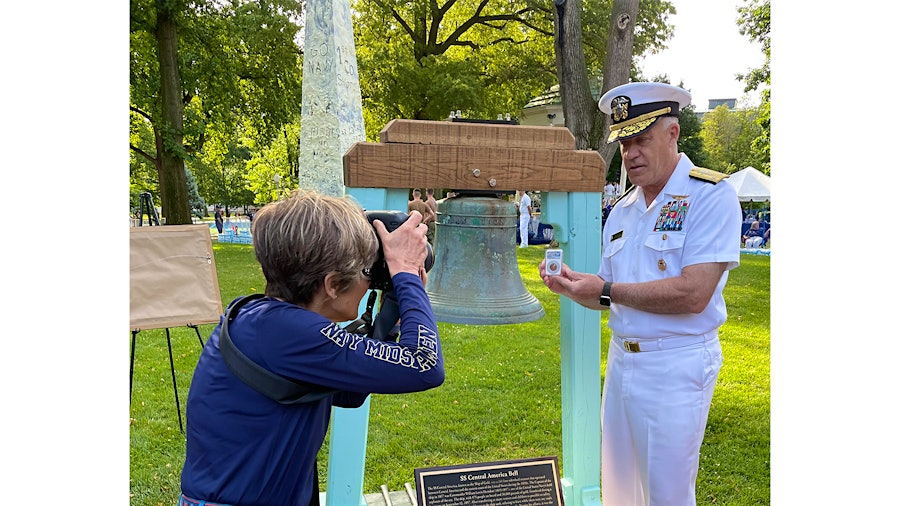Cigars And Gold From The Deep Sea
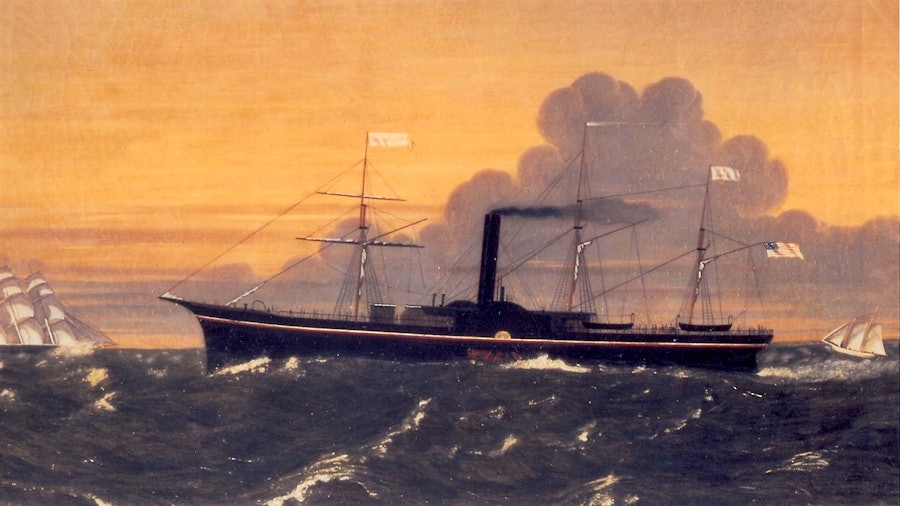
About 160 miles off the coast of the Carolinas, in the middle of the unforgiving, hurricane-fueled Atlantic Ocean, the S.S. Central America sank 7,200 feet to the sea floor on September 12, 1857, taking with it heaps of Gold Rush treasure. Inside what later became known as the “Ship of Gold” were 37 hand-rolled Cuban cigars fresh from Havana. Once described as “America’s greatest treasure,” the wreckage of the S.S. Central America was finally discovered in 1988 and loads of precious artifacts, gold, and yes, even those cigars, have since been extracted in various expeditions, the latest in 2014. Those Cuban cigars, along with a slew of other rarities and gold items, will be auctioned off on March 4 and 5 in Reno, Nevada.
Shipwrecks have long carried an intriguing mystique to them, both merited and exaggerated. They can serve as an alluring symbol to the past and something lost, waiting to be discovered, or simply, the perfect platform for fantasy to cultivate. But in the case of this wreck, the tragedy was one of great consequence, though it’s a story you likely may not have heard. The ship was carrying Gold Rush coins, ingots, jewelry and more that was mined in San Francisco and heading for New York City where banks desperately awaited its arrival. Around this time, a chain of confidence-killing dominoes began falling in the financial system and combined with the recent invention of the telegram, financial panic began to spread across the U.S. market faster than ever before. New York banks were heavily reliant upon this shipment of gold to reinforce their reserves, but unfortunately, it would be taken by the sea. Many believe this loss was a contributing factor to the Panic of 1857, one of the earliest financial crises in U.S. history.
Exactly how much gold was onboard is hard to say. The published commercial gold cargo was worth $1.6 million at the time, but that doesn't include gold brought on board by the passengers. This voyage was a common route for those traveling with gold from California, particularly since the first transcontinental railroad wouldn’t come until 1869. Bob Evans, Chief Scientist of the S.S. Central America Project who was on each of the recovery missions, says the passengers’ personal cargo amount at the time was usually very similar to the commercial cargo. If that was true in this case, the total gold onboard could have been worth hundreds of millions in today’s dollars.
After being transported by sea from San Francisco to Panama City, the gold cargo then moved by rail across the country (this was decades before the Panama Canal was carved) then found its way aboard the S.S. Central America. With a total of 578 passengers and crew aboard, the Ship of Gold left for New York City on September 3, 1857. After a brief stop in Havana for an evening—where the cigars were acquired—it continued its trek north. On September 9, the S.S. Central America found itself caught in a hurricane off the coast of the Carolinas. The ship and its crew battled the storm for a few days, taking heavy damage and making their best attempt to sign distress signals to other vessels of the sea, but with no luck. By the morning of September 12, the ship was in a dire state, taking on water, when she spotted the Brig Marine. Roughly 100 passengers–most of them women and children—were able to escape to the healthy ship via lifeboats. But the storm would soon return with a fury, pulling the S.S. Central America away from help and sealing her fate. By 8:00 pm on the evening of September 12, the S.S. Central America would be at the bottom of the ocean, taking 425 passengers and crew with her, including the lauded captain, Commander William Lewis Herndon. Fifty survivors were pulled from the water by a Norwegian bark, Ellen, and three more were picked up in a lifeboat a week later.
Though this tragedy delivered a devastating blow to the American public, it soon faded from general consciousness, and largely, from history itself, as just four years later, the first shots were fired on Fort Sumter, starting the American Civil War. In 1988, when Tommy Thompson and a group of explorers found the ship nestled at the bottom of the sea, interest rose again. In expeditions that would follow in the coming years, and again in 2014, gold in the form of thousands of freshly minted 1857-S Double Eagles, $20 coins, ingots, jewelry and much more started being brought up from the ocean floor, along with a slew of other artifacts.
In 1991, explorers discovered the trunk of first-class passenger John Dement, a merchant, miner and military veteran from Oregon. In the trunk they found 37 Cuban cigars, Brooks Brothers shirts and a pair of miner’s work pants that are suspected to be among the earliest Levi Straus clothes ever made and are the oldest known California Gold Rush-era jeans of their kind. In the first round of auctions for the S.S. Central America collection, which took place in early December 2022, one of the Brooks Brothers shirts sold for $3,240 and the work pants sold for a whopping $114,000. Between the early recovery expeditions and the latter in 2014, tons of notable artifacts have been discovered, including an 1851 Colt Navy pistol, bottles and tableware, a large gold ingot from a prominent San Francisco assayer of the era, keys to the ship's treasure room (sold in the December auction for $102,300), the ship’s 268-pound bell, an 18-karat gold quartz Gold Rush engraved brooch and a mid-19th century daguerreotype metal plate photograph of a young woman that’s been nicknamed, “Mona Lisa of the Deep.”
Gold, guns and even jeans are one thing, but how can cigars submerged 7,000 feet below sea level possibly survive in any sort of recognizable fashion for 130 years? “The cigars are a true wonder, no doubt, and it is quite counterintuitive that they would survive 134 years in the deep sea. A real curiosity,” says Bob Evans, chief scientist on the recovery missions. He points to the conditions on the bottom of the Atlantic, which he likens to “a dark, high-pressure, salty, deep-sea refrigerator.” He also notes that the trunk that held the cigars was not breached or open and that its leather shell helped limit water circulation. “When we opened the Dement trunk we saw a few dozen cigars that had been placed on top of clothes and other items. Soggy and limp, the cigars were carefully placed on a fiberglass screen and slowly freeze-dried over the next few months to preserve them,” he says.
Regardless of their appearance, these cigars, of course, are not in smokeable condition. But they are intriguing.
The excavation of the S.S. Central America was riddled with complex legal issues for years, but now the items are in the hands of Dwight Manley, former sports agent and coin enthusiast, and California Gold Marketing Group purchased the rights to the entire fortune, which includes all artifacts recovered from each expedition.
Several items have been donated to museums or elsewhere, including the ship’s bell, which weighs more than 200 pounds. Manley recently donated it to the United States Naval Academy in Annapolis, Maryland. The bell joins a 21-foot tall granite statue of Commander William Lewis Herndon, captain of the S.S. Central America, that’s stood on the Academy’s grounds since 1860. Herndon remains one of the most revered figures in United States Naval history. He’s had two U.S. Navy ships named after him and a historic town in Northern Virginia (Herndon, Virginia).
California Gold Marketing Group consigned the ship’s treasures to Holabird Western Americana Collections LLC for two auctions, the second coming next month. Many artifacts, including the cigars, will be sold. For more information, visit: https://www.holabirdamericana.com
